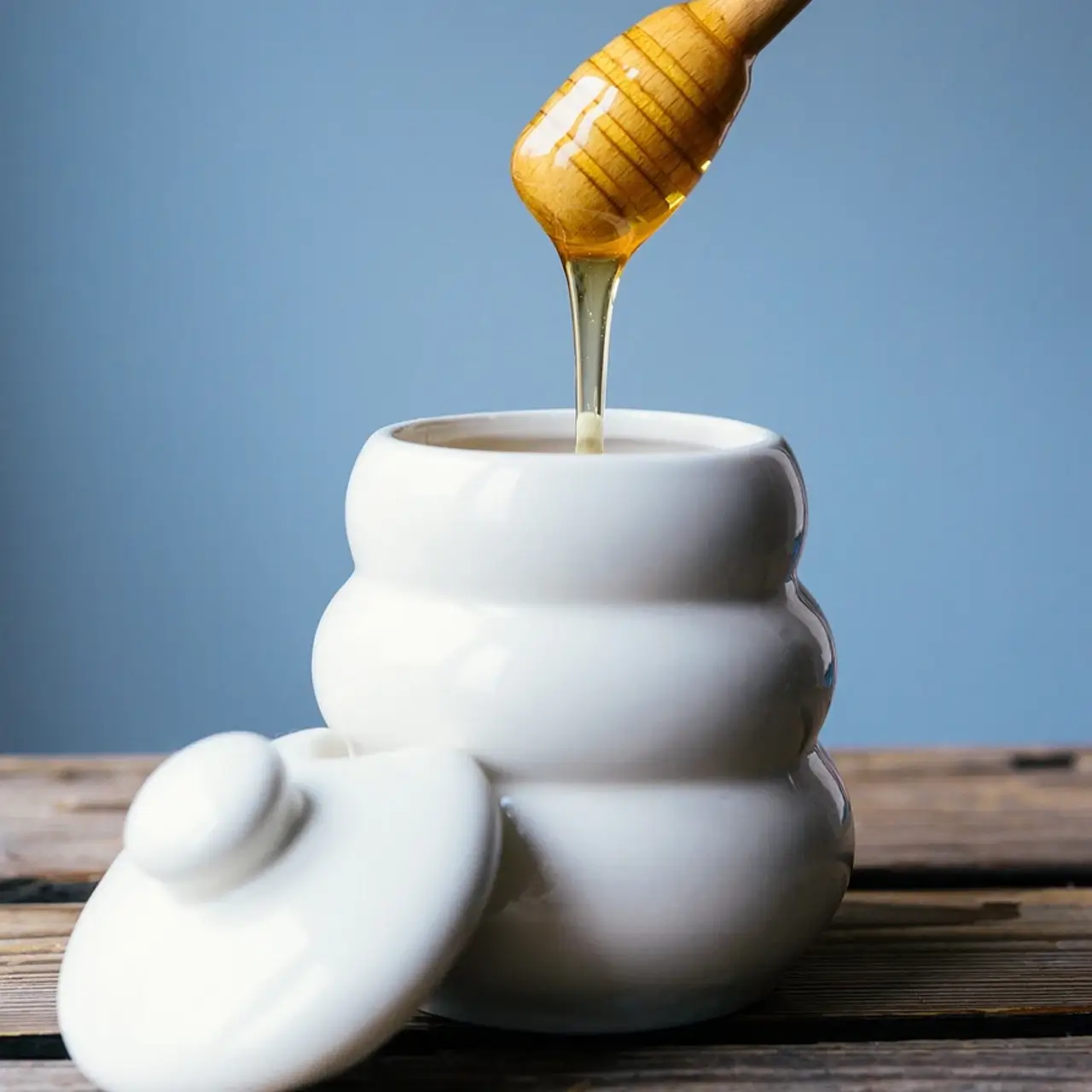Honey has demonstrated potential as a natural treatment for wound healing due to its various properties:
Honey’s inherent antibacterial properties, including its natural hydrogen peroxide content and other components, aid in combating bacteria that might impede the healing process or lead to illnesses.
Optimal Wound Moisture: Wound healing is a multifaceted and nuanced process that necessitates a favorable environment to facilitate expedited healing. Preserving a damp wound bed is an essential element in establishing an advantageous condition for wound healing. Honey serves as a potent natural treatment for wound healing.
Honey has been employed for centuries as a natural therapeutic agent for a variety of conditions, including the facilitation of wound recovery. It has been discovered to possess antibacterial characteristics that aid in preventing wound infections. In addition, it is beneficial to provide a humid environment surrounding the wound since this is crucial for tissue regeneration and expedited healing.
When a wound lacks moisture, it hampers the healing process, increasing the chances of scarring and infection. In contrast, honey maintains wound moisture, facilitating the development of new tissue and inhibiting scab formation. Consequently, this reduces the likelihood of scarring and facilitates expedited recovery.
Ultimately, honey proves to be a potent natural solution for promoting wound healing.
In addition, honey has been discovered to contain inherent enzymes that facilitate healing. These enzymes facilitate the decomposition of deceased tissue and stimulate the development of fresh tissue, accelerating healing and minimizing the likelihood of problems.
Ultimately, honey proves to be a potent natural solution for promoting wound healing. Its antibacterial characteristics and capacity to foster a moist environment for the wound accelerate the healing process and minimize the chances of scarring and infection.
Its natural enzymes help facilitate the healing process, making it a valuable asset in wound therapy.
Honey has the potential to decrease inflammation in the area surrounding a wound, which can accelerate the healing process and potentially alleviate pain.
The Utilization of Honey in the Process of Wound Healing:
Medical-grade honey is commonly employed in clinical settings for wound healing. This variety of honey undergoes meticulous processing and rigorous testing to guarantee its sterility and unwavering quality. Here is an example of how it could be utilized:
Administered directly to the wound site: A healthcare practitioner would apply a sterile covering covered with medical-grade honey to the wound.
Although honey has the potential to heal wounds, it should not be regarded as a substitute.
Honey-impregnated gauze is sterile gauze infused with medical-grade honey. It can be used as a dressing for wounds.
Factors to Take into Account:
Although honey has the potential to heal wounds, it should not be regarded as a substitute for expert medical treatment. Seeking medical advice from a physician for accurate assessment and management of the wound is imperative.
Honey is not universally appropriate for all types of wounds. Severe lacerations, wounds that have caused extensive tissue damage, or burns may necessitate distinct treatment methods.
Individuals who have allergies to bee stings or pollen should refrain from applying honey to wounds.
In general, honey can be a beneficial resource in wound healing when used correctly and under the supervision of a healthcare practitioner. Nevertheless, it is crucial to remember that it should be employed in conjunction with traditional medical treatment rather than as the main form of therapy.
